Viking archers were a vital part of Viking warfare, using their skill and precision to great effect on the battlefield. While not the first weapon that comes to mind when thinking of Vikings, archery played an important role in their culture.
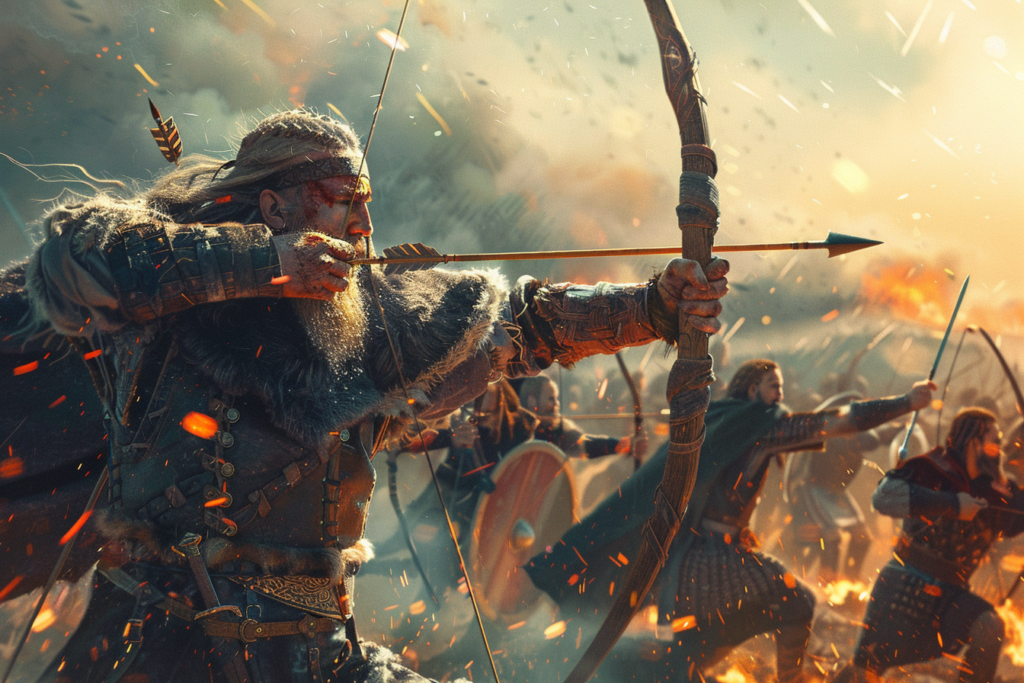
Viking archers were trained to shoot their arrows quickly and accurately, enabling them to fire multiple arrows in rapid succession. They were also skilled at firing arrows on the move, making them a formidable force on the battlefield.
Viking archers often carried a quiver of arrows on their back, allowing them to replenish their supply as needed.
The Viking bow was a self-bow, and the Vikings also used horn bows like those of the Eurasian nomads.
The round Viking shield was a simple, cost-effective, and versatile piece of armor that was usually made from planks of softwood, such as pine or fir, for their lightness and flexibility. The front was often covered in leather for added durability, and a central iron boss protected the hand.
The Art of Viking Archery
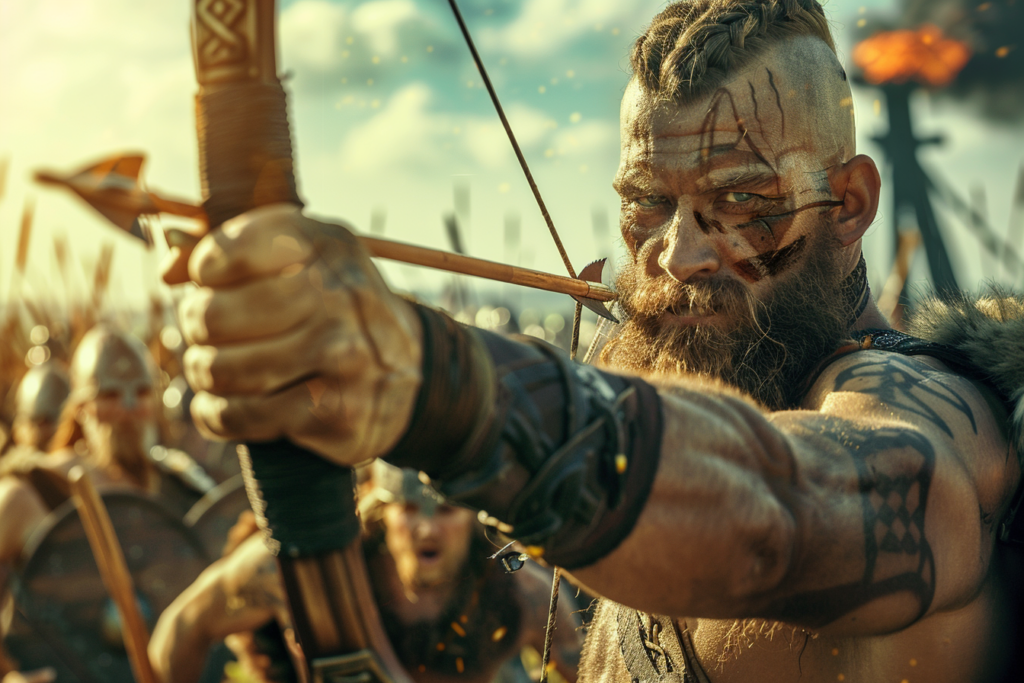
The Vikings were known for their fierce fighting skills, and archery was no exception. Viking archers were highly skilled and precise, using their bows and arrows to devastating effect on the battlefield. In this section, we will explore the materials and craftsmanship used in Viking archery, the different types of bows and arrows used, and the training and skills required to become a Viking archer.
Materials and Craftsmanship
Viking bows were typically made from wood, with yew, elm, and ash being the most commonly used woods. These woods were prized for their strength, flexibility, and durability.
The bows were typically made by hand, using traditional methods passed down from generation to generation. The craftsmanship of Viking bows was of the highest quality, with great care being taken to ensure that each bow was perfectly balanced and suited to its owner.
The arrows used by Viking archers were also made from wood, typically birch or ash. The arrowheads were made from a variety of materials, including iron, bone, and flint.
The arrowheads were carefully crafted to ensure that they were perfectly balanced and aerodynamic, allowing them to fly straight and true.
Bows and Arrow Types
The primary type of bow used by Viking archers was the longbow. These bows were typically made from a single piece of wood, with a length of around six feet.
The longbow was capable of firing arrows up to 250 meters, making it a formidable weapon on the battlefield. Other types of bows used by Viking archers included the short bow and the recurve bow.
The arrows used by Viking archers were typically around two feet in length, with fletching made from bird feathers.
The arrowheads were available in a variety of shapes and sizes, depending on the intended use of the arrow. Some arrowheads were designed for penetration, while others were designed for maximum damage.
Training and Skills
Becoming a Viking archer required a great deal of training and skill. Archers were typically trained from a young age, with many beginning their training at around the age of seven.
The training involved learning how to use the bow and arrow effectively, as well as developing the strength and endurance required to use the weapon in battle.
Viking archers were known for their accuracy and precision, with many being able to hit a target at a distance of 200 meters or more. This level of skill was achieved through years of practice and dedication, as well as a deep understanding of the physics of archery.
Tactics and Strategies in Battle
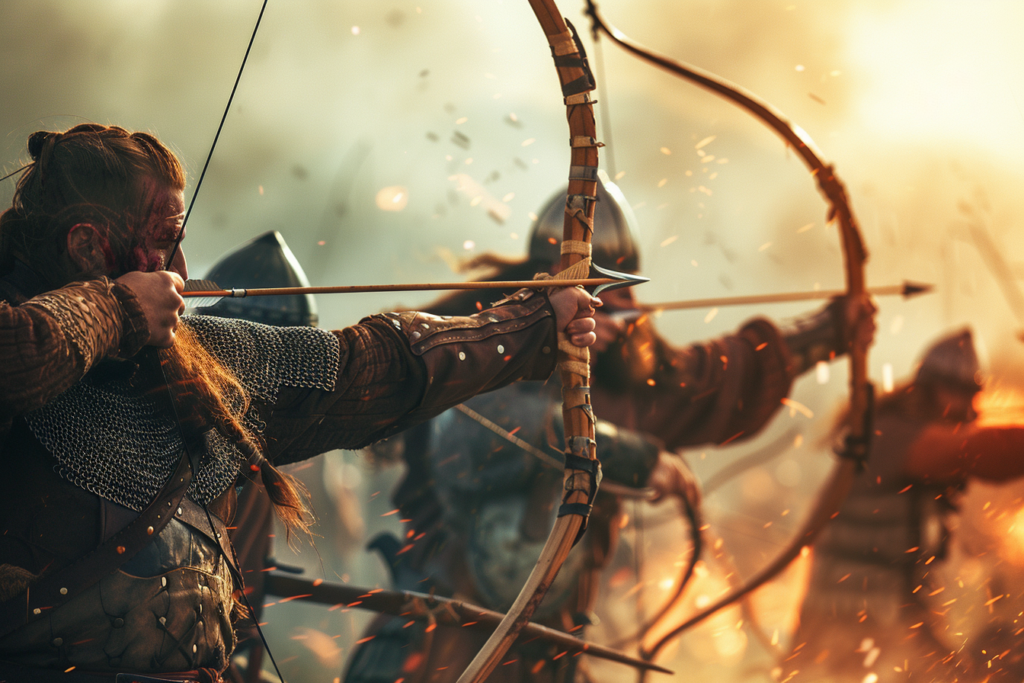
Offensive Strategies
Viking archers were an integral part of the Viking army, providing excellent support to the infantry. They were skilled in using the longbow, which was an essential weapon in both hunting and warfare.
Viking bows were typically made from wood, with the bowstring made from animal sinew. The arrows were made of wood and had points made of iron, bone, or even flint.
In battle, Viking archers were deployed to the front lines to weaken enemy ranks with their longbows. They would fire arrows at the enemy from a distance, causing casualties and disrupting the enemy’s formation.
Once the enemy was weakened, Viking infantry would move in for the kill, using swords, spears, and axes.
The Vikings were also known for their naval prowess, and their longships were a key component of their offensive strategy.
They could launch surprise attacks on coastal towns and cities, raiding and pillaging as they went. The Vikings’ heavy use of ships, good strategic mobility, and strong grasp on logistics ensured they could cause significant damage to their enemies.
Defensive Formations
The Vikings were not just skilled in offensive tactics, but also in defensive formations. The shield wall formation was one of the most effective defensive tactics used by the Vikings.
The round Viking shield was a simple, cost-effective, and versatile piece of armor. These shields were usually made from planks of softwood, such as pine or fir, for their lightness and flexibility. The front was often covered in leather for added durability, and a central iron boss protected the hand.
In battle, Viking warriors would form a shield wall, standing shoulder to shoulder with their shields overlapping. This formation provided excellent protection from enemy arrows and allowed the Vikings to advance on their enemies.
The shield wall was also an effective way to break through enemy lines, as the Vikings could use their shields to push back the enemy and create gaps in their formation.
During large-scale battles, the Vikings would often use siege tactics to break through enemy defenses.
They would use fire to burn down enemy fortifications and use battering rams to break through walls. The Vikings were also skilled in raiding, using their mobility and speed to attack and loot enemy settlements.
Roles and Impact on Viking Society
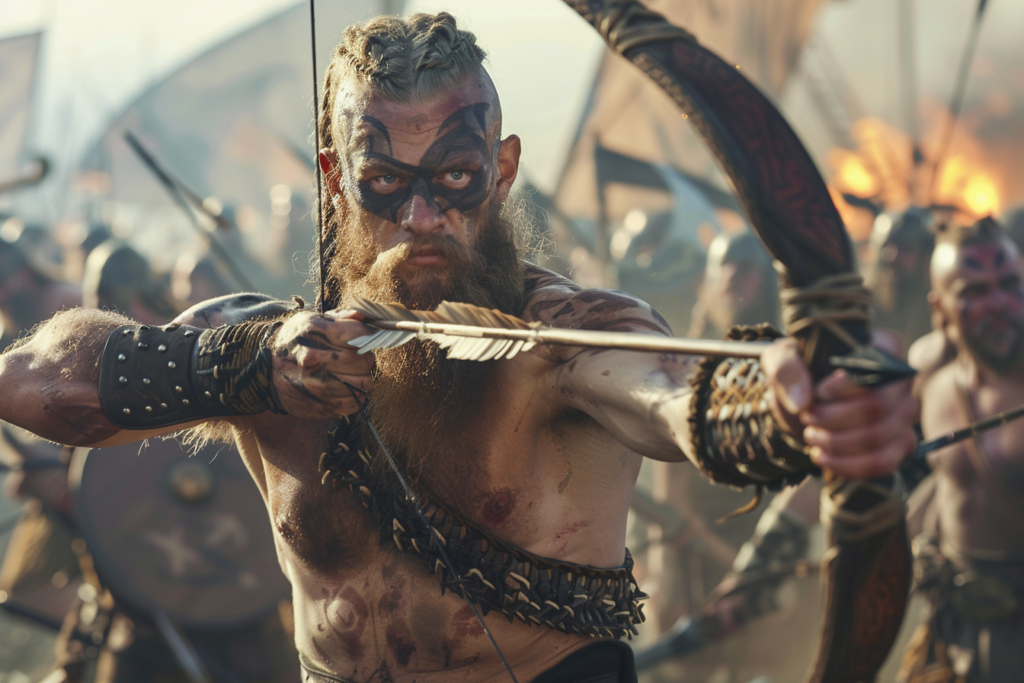
Cultural Significance
Archery was not a primary weapon for the Vikings, but it played a crucial role in their warfare. Viking archers were skilled and precise, and they used their bows and arrows to provide ranged support on the battlefield.
The Vikings were known for their ferocity in battle, and their use of archery only added to their reputation as fearsome warriors.
Archery was also a part of Viking culture, and it was used for hunting as well as warfare. The bow and arrow were important tools for survival in the harsh Scandinavian environment, and the Vikings developed a deep appreciation for the skill and precision required to use them effectively.
Legendary Figures and Sagas
Viking archers are mentioned in several sagas, which are stories of heroic deeds and legendary figures from the Viking Age.
One of the most famous Viking archers was Harald Hardrada, who was a king of Norway and a skilled warrior. He is said to have used a bow and arrow to kill a Norse god in battle.
The Bayeux Tapestry, which depicts the Norman Conquest of England in 1066, also includes scenes of Viking archers.
The tapestry shows the Vikings firing arrows at the English army from their ships, demonstrating the important role that archery played in Viking warfare.
Overall, Viking archers were an important part of Viking society and warfare. Their skill and precision with the bow and arrow added to the Vikings’ reputation as fearsome warriors, and their use of archery was deeply ingrained in Viking culture and mythology.

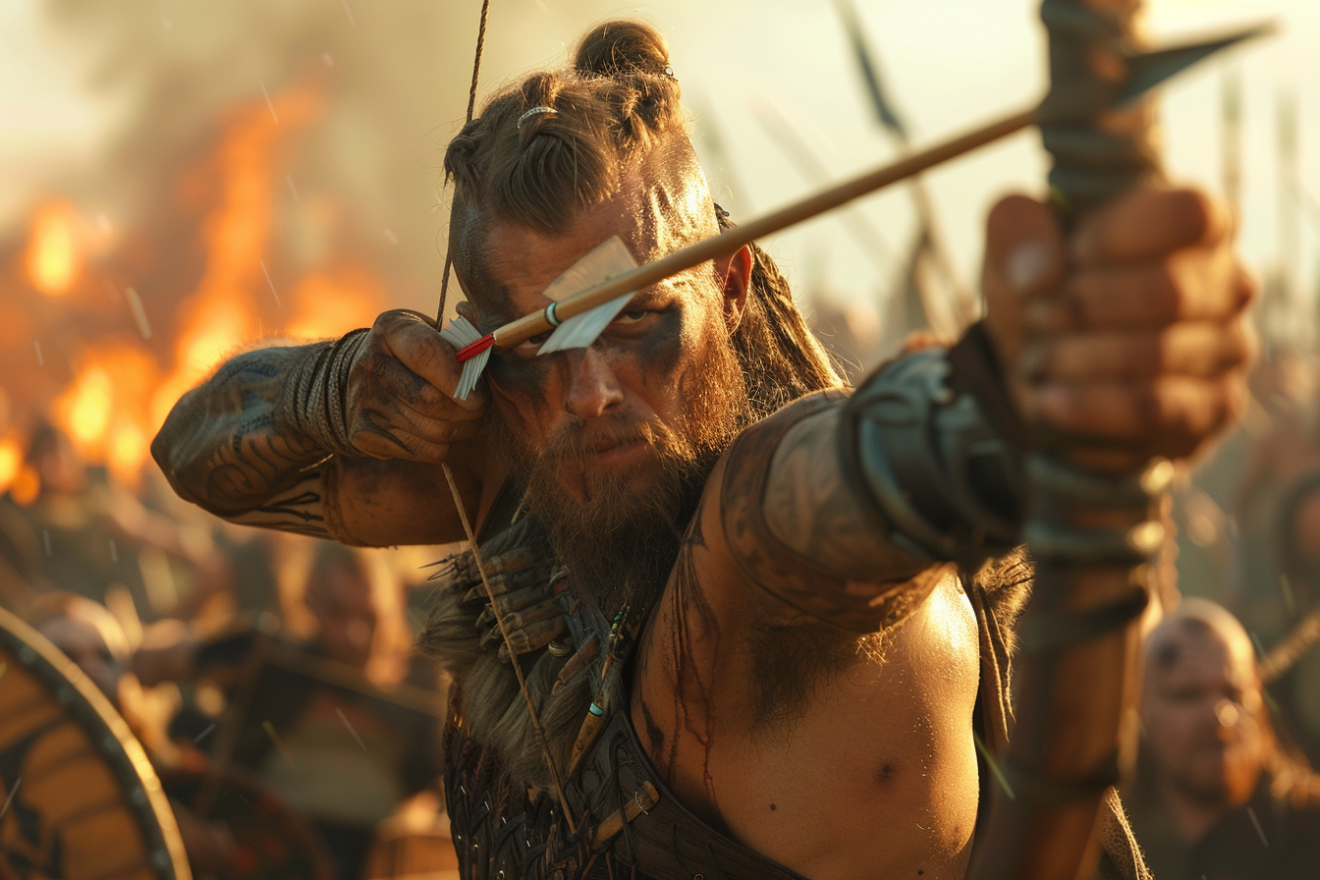








Add Comment